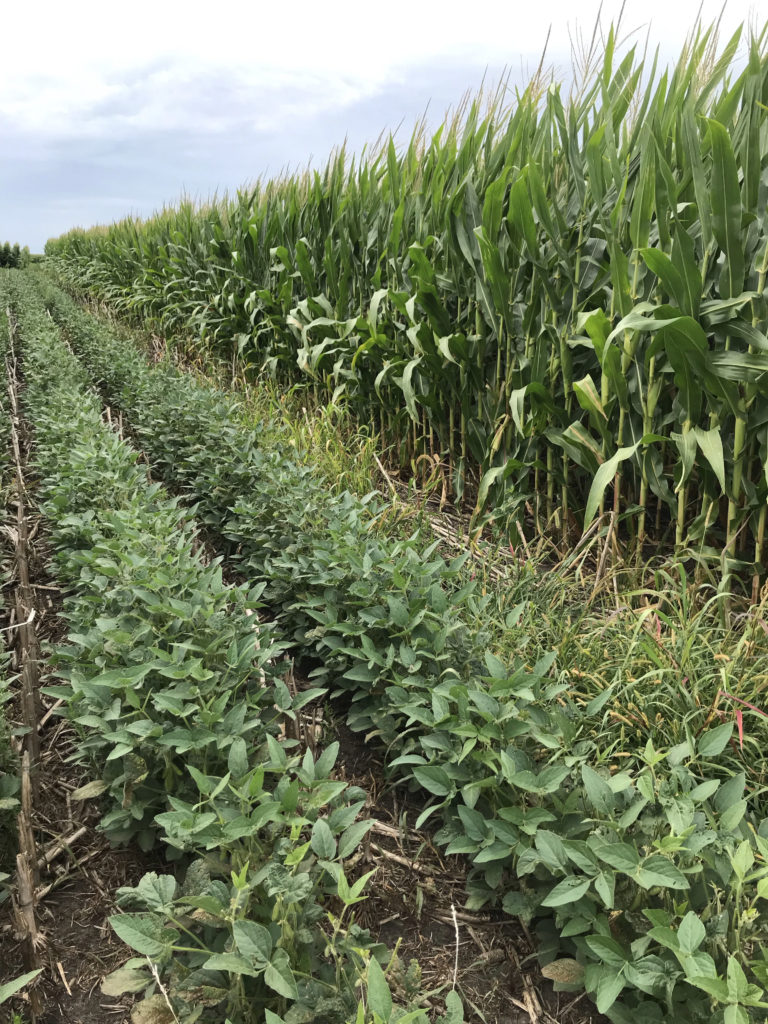AMES, Iowa – Rotating corn and soybeans, a widely used practice among Midwest farmers, potentially could contribute to long-term declines in soil organic matter, according to new research from an Iowa State University scientist.
Steven Hall, an assistant professor of ecology, evolution and organismal biology, led the study, published recently in the academic journal Plant and Soil. The study examines the mechanisms that drive the decomposition of organic matter in soils that undergo long-term corn and soybean rotations. Hall said the study shows how corn and soybean rotations can provide important environmental and management benefits for farmers, but the practice also comes with tradeoffs that some farmers may wish to address by adjusting their management practices.
“It could be that the benefits of corn and soybean rotation may also come with some long-term costs,” he said.
Rotating corn and soybeans allows farmers to use less nitrogen fertilizer when growing corn. That benefits the environment and allows farmers to save on input costs. However, studies have noted corn-soybean crop rotation leads to lower organic matter in the soil when compared to land that undergoes continuous corn production, or when other crops are included in rotation along with corn and soybeans.
Optimal levels of soil organic matter, usually composed of dead plants and microbial residues, help crops thrive by releasing nutrients into the soil and allowing soils to retain moisture.
Hall said scientists previously suspected that organic matter decline could be due to the fact that soybeans simply deposit less organic matter than corn does, meaning land that undergoes corn-soybean rotation will end up with less organic matter than land where corn is grown continuously. Hall said his study also points to unique synergies that arise from rotating the two crops.
Soybeans leave nitrogen-rich residue in the soil, which leads to vigorous growth of decomposer bacteria and fungi microbes. Corn plants, when they’re rotated onto those same acres, have relatively nitrogen-poor residue, so the soil microbes turn to attack older organic matter in the soil as a source of nitrogen to keep up with the consumption levels they were used to under soybeans. This process likely contributes to the soybean nitrogen credit, but played out over the course of years, it may stimulate the decomposition of organic matter in the soil.
“The microbes get fat and happy with soybeans and then need to go elsewhere for nutrients when they decompose corn,” Hall said. “With continuous corn, those microbes are apparently less vigorous.”
Hall said it may be possible to sustain or increase organic matter by introducing other grains and legumes as well as cover crops, such as rye or oats, into corn and soybean crop rotations. That way, farmers could retain the benefits of rotating their crops while replacing organic matter.
The study resulted from laboratory experiments carried out over the course of a year, Hall said. Scaling the research up to the field level is the next step, but that could prove difficult because controlling all of the relevant variables in a field setting would pose challenges. Other ISU scientists who contributed to the study include Ann Russell, adjunct associate professor of natural resource ecology and management, and A’lece Moore, a former student in Hall’s lab.
Original post https://alertarticles.info
